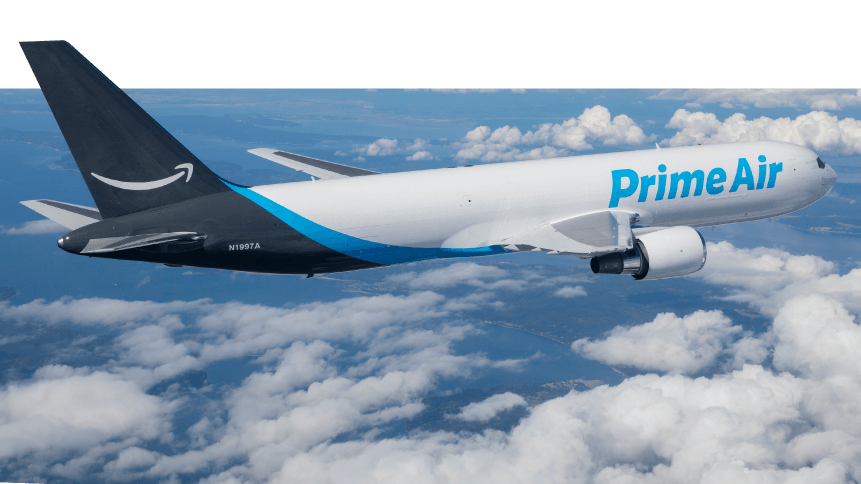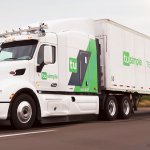Is it time all e-retailers offered ‘green delivery’?

E-commerce giant Amazon announced last week that it would be adding 15 more 737-800 cargo planes to its Amazon Air fleet— by 2021, it plans have 70 planes in total.
This fleet will deliver “hundreds of thousands” of packages a day from more 20 air gateways in the United States. The sizeable investment is to satisfy customers’ expectations for rapid deliveries.
And while Amazon is the champion of click-to-door shopping, customers’ need for instant gratification means free and fast deliveries are now a key differentiator.
Retailers are under pressure to advance their logistics arms, but as reported by Axios, “Flying, trucking and delivering millions of packages a day comes with a cost.” Fulfilling on-demand needs means delivering more volume in less time, and that means losing original efficiencies.
The cost is not just a financial one. The pursuit of free shipping and the transportation used to achieve it is also having a serious environmental impact.
Deliveries and CO2
According to logistics firms’ sustainability reports, Axios found UPS’ ground and air deliveries resulted in 13.8 million metric tons of CO2 emissions in 2017 as it raced to deliver a total 5.1 billion packages. FedEx exceeded 15 million tons in the same year.
That’s just two of hundreds of logistics firms— and it doesn’t include Amazon. Consider emissions by the logistics industry in total, and it’s safe to say that it’s behind a considerable chunk of the 6 billion tonnes of CO2 produced in the US each year.
This output is partly due to a scattering of resources which could once be consolidated, according to transportation expert Miguel Jaller in an interview with Vox.
“Before, companies were able to consolidate, to optimize their distribution. Now, because some of them are offering really fast and rushed deliveries, that disintegrates the consolidation,” said Jaller.
“Every individual is buying more and wanting those goods to be at their home really fast. That creates more vehicles, more traffic, and potentially more emissions.”
Consumers and governments are beginning to realize that fossil fuels are not sustainable and electric vehicles offer a longer-term alternative, but they are yet to realize just how big an impact the growing convenience of their online shopping habits could also be having.
YOU MIGHT LIKE

UPS launches first regular drone deliveries in US
Green targets
As this awareness inevitably grows, delivery companies will face pressure to prove they are ‘going green’— and there’s evidence that many of the world’s logistics giants anticipate a change in attitudes.
Twenty-two percent of ground fuel purchased by UPS in 2017 was alternative fuel, rather than gasoline or diesel— the company also deployed more than 300 electric vehicles and 700 hybrids across the US and Europe.
DHL, meanwhile, has set out to achieve zero carbon emissions by 2050, while firms are using big data to optimize routes and cut down on mileage during deliveries.
Amazon also claims to be set on improvements. It seeks to achieve zero carbon emissions for 50 percent of its shipments by 2030— although we have to take that into account alongside the planned growth of its logistics arm.
New delivery methods such as drone deliveries (an area seeing rapid progression by Amazon and Walmart) and fleets of electric trucks could play a role in reducing carbon emissions in the long term. However, the overall benefit of new, cleaner technology has must be weighed against the ever-greater popularity of e-commerce and facilities needed to support it— the airplanes, air hubs, fulfillment centers, manufacturers, and packaging required.
Faster is not always better
Perhaps then, it falls to e-commerce firms to seek moral high-ground and strive to make consumers aware that “faster is not always better”. As consumers, we don’t need everything delivered next day— if presented with a marginally slower, ‘green’ delivery option, perhaps conscientious shoppers would consider it.
That’s not a new concept. The UK-based food delivery company Ocado encourage their customers to book slots when deliveries are being made in the same area— these are highlighted as “greener delivery slots”. A similar tactic is employed by British supermarket Sainsbury’s.
Meanwhile, Dutch food-delivery providers Picnic follow a set route at set times. Customers learn when the EV delivery van will be en route to their street, or follow it on a live app. They can then ensure they’re home to receive it.
It’s not a long shot that similar methods could be employed, encouraged, and even incentivized by the likes of Amazon et al, with benefits to efficiency and cost-savings as a result.









